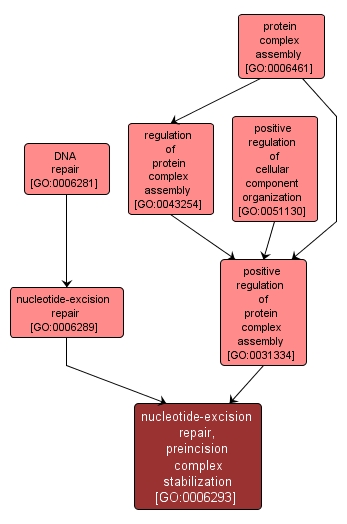GO TERM SUMMARY
|
| Name: |
nucleotide-excision repair, preincision complex stabilization |
| Acc: |
GO:0006293 |
| Aspect: |
Biological Process |
| Desc: |
The stabilization of the multiprotein complex involved in damage recognition, DNA helix unwinding, and endonucleolytic cleavage at the site of DNA damage as well as the unwound DNA. The stabilization of the protein-DNA complex ensures proper positioning of the preincision complex before the phosphodiester backbone of the damaged strand is cleaved 3' and 5' of the site of DNA damage. |
|

|
INTERACTIVE GO GRAPH
|














